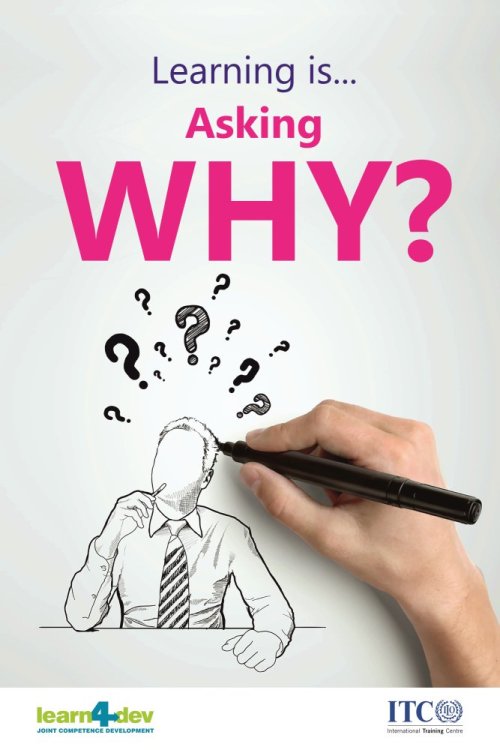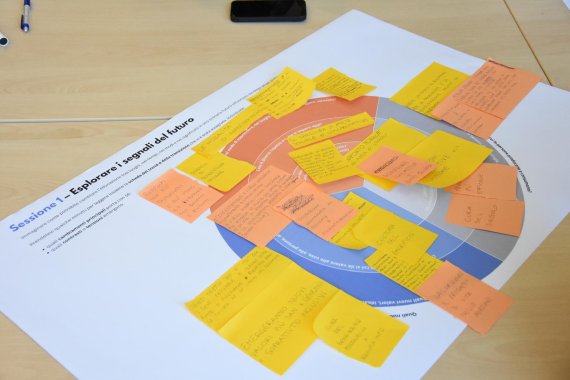How to learn at work (when you have no time)
How to learn at work (when you have no time)
3 ways we used microlearning for an ILO staff training activity.
9 Dezembro 2021

It’s Monday. You have three back-to-back calls. Your email inbox is bursting. And the *ding* from your instant messenger creates a stress-inducing symphony. Sound familiar?
Amidst all this, you receive news about a soon-approaching staff development opportunity. “I wish!” you think to yourself. You’re not alone.
Welcome to the future of lifelong learning. We’re all crunched for time, but also curious to learn new skills while at work. This year, the Learning Innovation Programme teamed up with the ILO to deliver just-in-time learning journeys in this age of digital overload.
This co-creative process offered new insights, skills, and tools to enable and support staff to better contribute to the ILO’s development cooperation programs and partnerships. And it allowed for on-the-job learning for all staff.
Here’s how we made 2021 a year of (micro)learning:
1. Break down learning into bite-sized chunks
Studies show that staff generally only have 1% of their workweek dedicated to training and development. Microlearning is a way to fill that 1% with practical, to-the-point learning bites. This approach accommodates busy schedules, while also giving 15 minutes a day to focus on a new idea, take a break from the usual routine, and learn a new skill to make a significant impact on self-development.
Three microlearning samples:
- An easy-to-reference infographic that visually represents a set of key steps to follow
- An informational podcast interview with an expert who has field experience to share
- A how-to video breaking down how to accomplish a task effectively
We adopted this methodology to deliver a more flexible learning experience through over 90 microlearning digital activities to complete in no more than 15 minutes. This agile approach led to over 15,000 learning interactions, affirming that staff found time to learn.
2. Nudge your learners (where they are)
Empathy is at the core of curating meaningful learning. Meet your learners where they are. Think about how you like to learn and also how you like to be reminded to learn. Translation: don’t send too many reminder emails.
The fully asynchronous, online modality gave learners the freedom to engage with the knowledge bites when they wanted, where they wanted on the eCampus. Each month, a new journey was launched through a simple, conversational email (also known as a learning nudge) with that month’s offerings. This way, learners could pick and choose their training based on their immediate needs without a stressful deadline.
Three tips for learning nudges:
- Keep it short (and mobile-friendly)
- Keep it consistent (but not daily)
- Keep it engaging (so no one looks away)
Ranging from dynamic podcasts and interactive videos to self-paced lessons and practical infographics – the learning opportunities reached over 1,000 learners to engage anywhere, anytime.

3. Just Google it
According to recent studies, 80% of workplace learning is informal. Informal learning means filling that 80% with spontaneous, meaningful learning experiences that get the job done. That might look like asking a colleague for advice, watching a how-to video online, or googling a solution. We do it all the time.
Three ways to curate informal learning:
- Create a community of practice
- Host a virtual coffee session
- Deliver talks through holograms (we’re not joking)
Born out of a year of social distancing, these are opportunities to meet others and share what they know (or may not yet know) in a casual and friendly way. Throughout the year, the ILO’s Development Cooperation Community of Practice became a space for exchange and reciprocated support through engaging forums, virtual coffees, and even holographic talks reaching more than 1,200 curious community members.
Remote working has its challenges, but also its opportunities – an opportunity to bridge distances.



